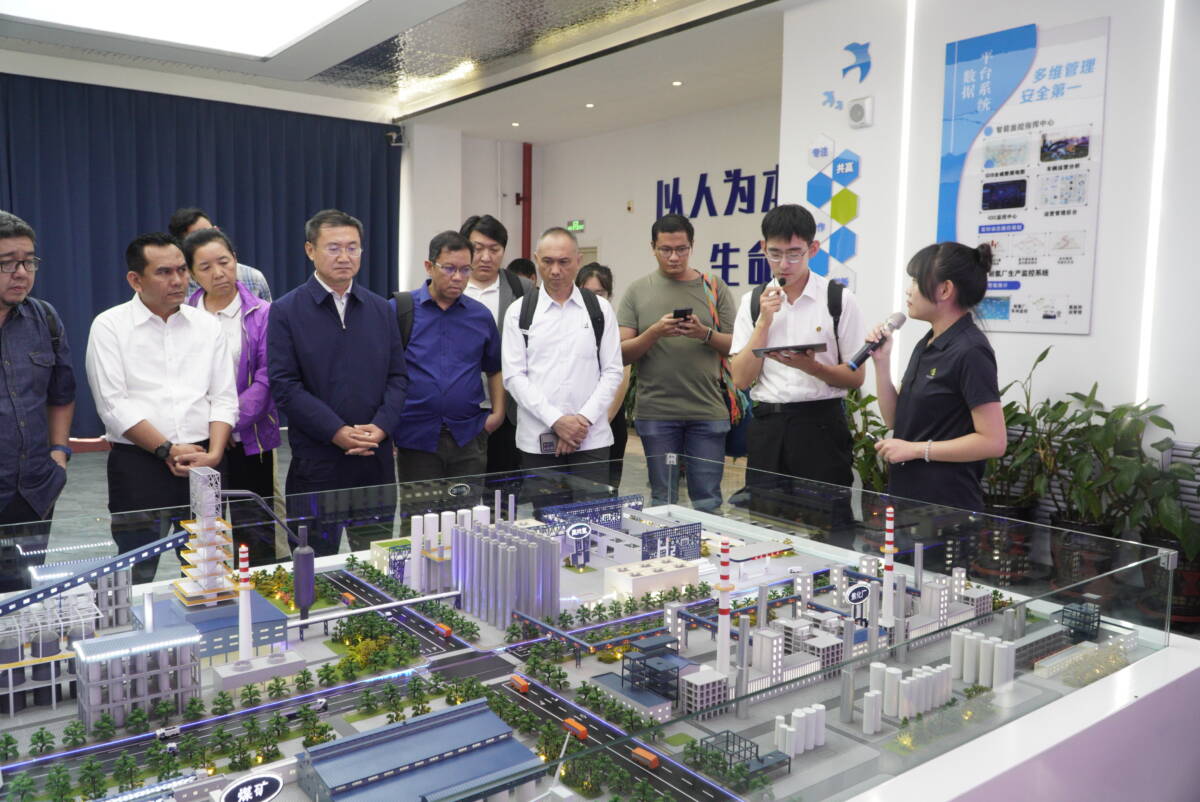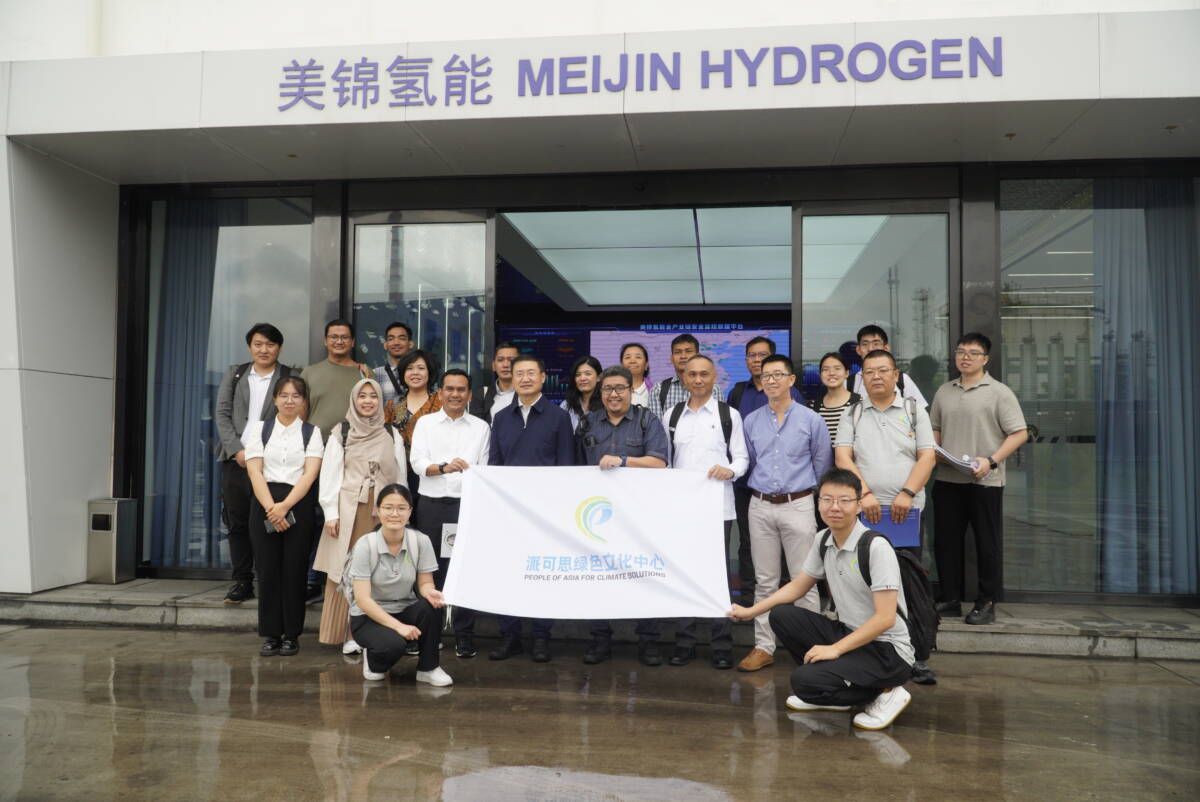July 30, 2024,Taiyuan, Shanxi, China– A hydrogen-powered bus had been parked since seven in the morning in Shanxi, China. The hydrogen-fueled bus took groups from Indonesia and China on a tour of the hydrogen producer Shanxi Meijin Energy (30/7/2024)

The group was riding a bus powered by hydrogen
This activity was part of the ‘Second Discussion on a Coal-Free Future and Field Visit on China-Indonesia Energy Transition,’ organized by the Shanxi Carbon-Peak-Carbon-Neutral Energy Revolution Research Institute (CCERR) in collaboration with People of Asia for Climate Solutions (PACS) and the Institute for Essential Services Reform (IESR). The agenda brought together representatives from the governments of South Sumatra and East Kalimantan to learn about the development of energy transition in Shanxi.
According to the People of Asia for Climate Solutions (PACS) report, Shanxi is one of the world’s largest coal-producing provinces, with annual production exceeding 1 billion tons over the past two decades, and nearly reaching 1.4 billion tons by 2023. Shanxi supplies 70 percent of its coal to other provinces in China, primarily for electricity generation and powering heavy industries.
Coal price volatility has also significantly impacted Shanxi’s economy. In 2024, during a downturn in the coal industry, Shanxi’s GDP growth rate was just 1.2 percent in the first quarter, placing it last among China’s 31 provinces.
In 2021, the Chinese government released China’s Action Plan to achieve peak carbon dioxide emissions and carbon neutrality. The plan includes several key commitments, such as strictly controlling and gradually reducing coal consumption. Achieving carbon neutrality is also a priority for the Shanxi government, which has published a plan to develop the hydrogen energy industry in Shanxi Province for the period 2022-2035.
Shanxi Meijin Energy is a company specializing in the integrated hydrogen supply chain industry in Shanxi. Initially, the company focused solely on coal processing, starting in 1983. However, Meijin began developing hydrogen production in 2017. The hydrogen produced by Meijin is still classified as gray hydrogen, which is derived from coke processing. Gray hydrogen is not environmentally friendly because its production process generates emissions, involving the conversion of coal into coke, followed by the extraction of gasses and chemical elements to produce hydrogen.

The group observed a model of an integrated gray hydrogen industry
Meijin’s strategy to offset the emissions from hydrogen production includes utilizing hydrogen-powered vehicles. By 2023, Meijin Energy, through its subsidiary Feichi Technology, had deployed 1,600 hydrogen fuel vehicles, which have collectively traveled more than 81 million kilometers safely. Meijin claims that these efforts have reduced emissions by over 70,000 tonnes of carbon dioxide equivalent.
In 2022, Meijin Energy publicly announced its commitment to carbon neutrality, aiming to achieve carbon neutrality across its entire supply chain by 2040.

Hendriansyah, Head of the South Sumatra Provincial Energy and Mineral Resources Service
Hendriansyah, Head of the South Sumatra Provincial Energy and Mineral Resources Agency, stated that the visit to Meijin demonstrated the potential of hydrogen technology as a valuable lesson for South Sumatra.
“At Meijin, we observed a concentrated area where each industry’s products are interconnected,” said Aryansyah.
Meanwhile, Wira Swadana, Manager of the IESR Green Economy Program, emphasized that coal-based industries like Meijin need to innovate and focus on developing environmentally friendly green hydrogen. He pointed out that gray hydrogen production still depends on coal, a resource with fluctuating prices, and contributes significantly to carbon emissions. Additionally, the use of gray hydrogen vehicles does not effectively address the core issue of emissions.
“The development of hydrogen technology in Shanxi is comprehensive across the entire supply chain. However, investment and technological development should prioritize sustainable technologies rather than prolonging dependence on fossil fuels,” Wira explained.

Wira Swadana, third row, second from the left (wearing a gray shirt).
